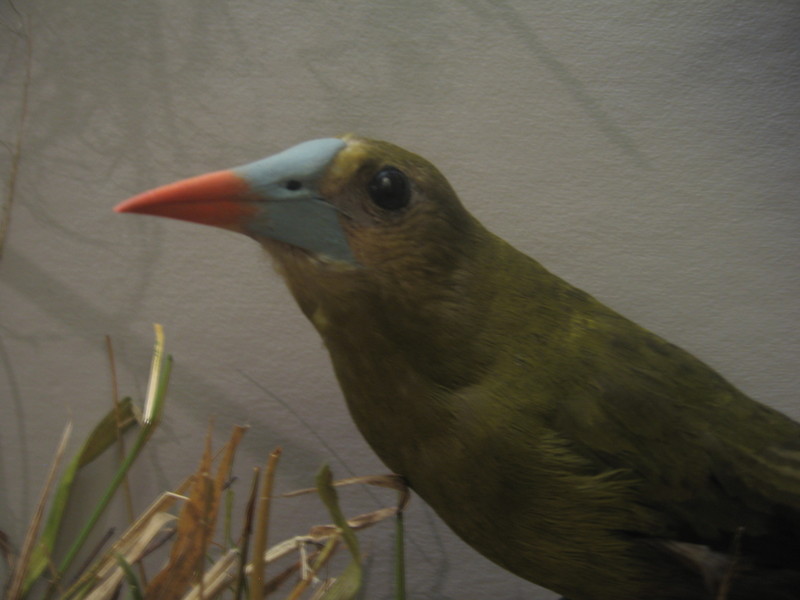Olive Oropendola (Psarocolius yuracares) - Wiki Olive Oropendola
From Wikipedia, the free encyclopedia
Order: Passeriformes
Family: Icteridae
Synonyms: Psarocolius bifasciatus yuracares, Gymnostinops yuracares
[Photo] An Olive Oropendola that's preserved. At the Field Museum. Date: 18 January 2006. Author: http://en.wikipedia.org/wiki/User:Mitternacht90 License: public domain.
The Olive Oropendola, Psarocolius yuracares, is both the largest member of the icterid (New World blackbird) family and the largest passerine in South America. It ranges from Southeastern Colombia to Northern Bolivia and Amazonian Brazil. Some authorities lump the Olive Oropendola together with the Par?? Oropendola (Psarocolius bifasciatus) to make a single species: "Amazonian Oropendola" (Psarocolius bifasciatus). Both are among the oropendola species sometimes separated in the genus Gymnostinops.
The sexes of this icterid are very different in size: the male is 52 cm (nearly 21 inches) long and weighs 550 g (1.1 lbs), slightly bigger than the average hawk; the smaller female is 41 cm (16 inches) long and weighs 260 g (9.2 oz), the size of a small crow.
The Olive Oropendola is olive-yellow on the head, back, throat and breast; and deep chestnut on the lower back, wings and lower underside. The overall appearance is described as "divided", with the pale foreparts and the dark rearside. The bill is mostly black, with the outer half orange red. The eyes are brown and the bare skin on the cheeks is pale. A hair-like crest is barely noticeable on the top of the head.
The Green Oropendola has many similar plumage characteristics to the Olive Oropendola, however it lacks both the divided appearance to the plumage, has no bare-skin on the face and is clearly smaller.
This oropendola lives in humid lowland forests. It is also found in rich floodplain forests. The Olive Oropendola is a somewhat scarce bird over most of its range. These are canopy birds that are most often seen flying high over the tops of the trees. Compared to other oropendola it is a "loner", mostly frequently being seen alone and drawing less attention to itself than its cousin, despite the greater size. Groups of 2 to 5 are seen occasionally, and may even mix with other oropendolas. The breeding colonies are small, usually with fewer than 5 birds. The nest is a hanging woven ball fibres and vines, 60???180 cm long, high in a tree. Due to their inconspicuous nature, relatively little is known about these bird's breeding habits.
The omnivorous diet appears to be fairly catholic, with small vertebrates, large insects, amphibians, reptiles, nectar, and fruit. They often travel great distances through the forests, except when lingering around their nesting "colony".
The song of the Olive Oropendola is a liquid, gurgling and "expanding" stek-ek-ek-ek-eh-eh-eh-o'o 'GLOOP!, given as a displaying male falls forward on a perch and rustles his wings over the back. Nasal raap and whrup calls are given while in flight or when foraging.
http://en.wikipedia.org/wiki/Olive_Oropendola
| The text in this page is based on the copyrighted Wikipedia article shown in above URL. It is used under the GNU Free Documentation License. You may redistribute it, verbatim or modified, providing that you comply with the terms of the GFDL. |
